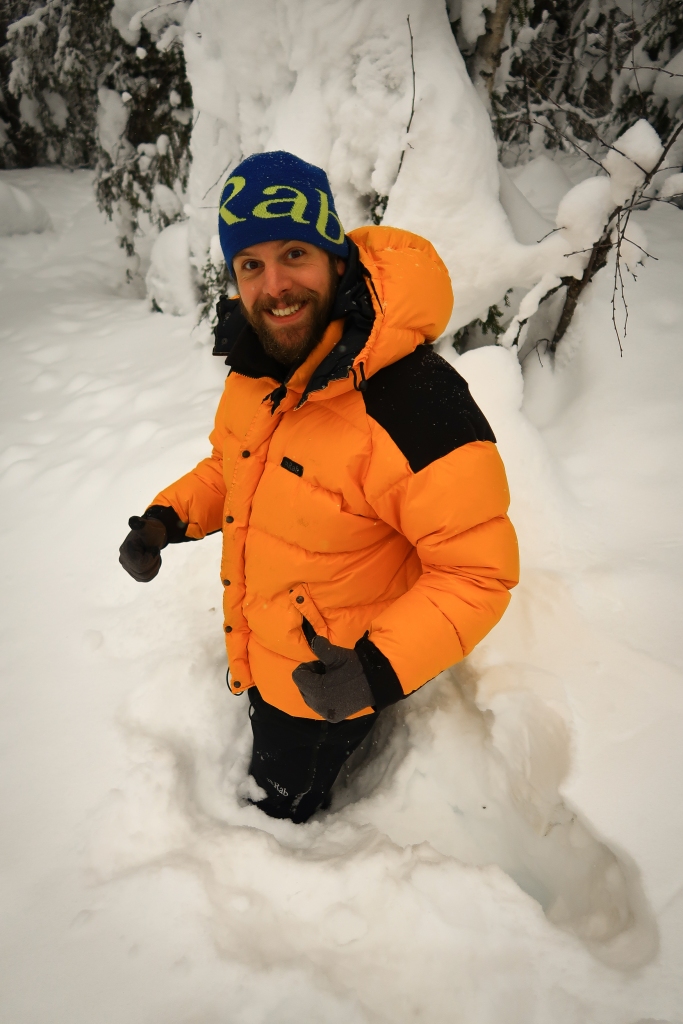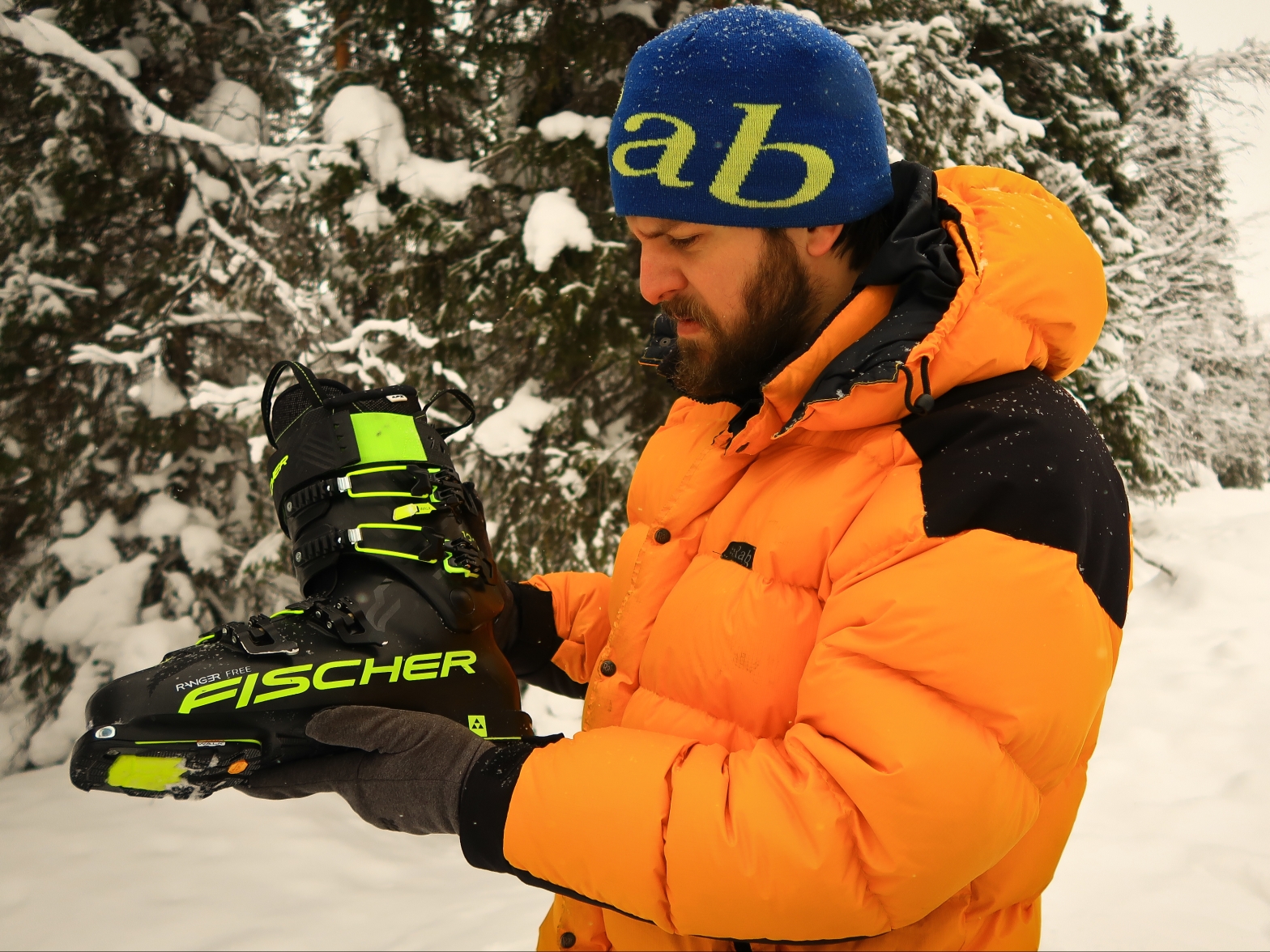Every trip, whether it’s an Arctic expedition or summer hike through the Carpathians, has those key pieces of equipment that either made you wonder how you ever did without, or were the bane of your life for the entire duration. Here is my champion and nemesis of my expedition into Sarek National Park.
Throughout the expedition, aside from a couple of very cold nights as a result of my sleeping bag collapsing, there was one nemesis that plagued me; one piece of equipment which bothered me more than anything else and would eventually change the course of the whole trip. Conversely, there was one champion which, had I not brought, would have made for significantly more suffering on my adventure; this was one item which literally saved the day. In a curious twist of fate, both items were of exactly the same type; the humble boot (or pair thereof).
Anyone following the exploits of my expedition or reading my story of how it all went, would certainly pick up the less than subtle hint that my ski boots were of constant nuisance to me. I knew right from the planning stage that using an alpine touring setup, with hard plastic boots, was less than ideal, but I was keen not to sell any kidneys to pay for yet another shiny new attic filler, despite knowing I would need to eventually. So, I convinced myself I would undertake this expedition with my alpine setup and suffer the perceived mild inconvenience until I bought proper Nordic skis and boots for my next adventure. Hindsight is a cruel and smug mistress; if only I had known my folly!
“they were a blister machine”
While perfectly suited to single day ski tours up and down the mountain, or multiple days on prepared slopes, my Fischer Ranger Free 130 boots were the culmination of a year long search to find a pair of alpine touring boots that would fit my awkward feet (occasionally likened to water skis by my family). However, for multiple days touring on the flats, they were as good a blister machine as any foot devil could possibly conceive. I suspect it has something to do with not being able to simultaneously lock down my heel while also allowing sufficient movement to actually be able to ski faster than a lemming. As you can see in the photo, there is a plastic lip at the lower part of the boot which is the offending region which was rubbing above my heel. I also had troubles with the outer shell catching between the buckles, causing a loud click every step; this required some field surgery with a knife, or boot butchery, to correct.



By day two in these boots the blisters were getting big. By day five I had gone through all my Compeed blister plasters and the largest blister was the size of a small tangerine. By day seven I was in agony with every step and loosing significant enthusiasm for forward motion; and I haven’t even got started about trying to take the damn things on and off each day! With morning temperatures below -25°C being fairly common on my expedition, the hard plastic boots were a struggle to put on, and not much easier to remove later that evening. Halfway through the trip I even snapped off one of the sturdy pull loops trying to force one of the unwilling boots onto my suffering foot. All I can say is, thank god I only needed to do it twice a day. Fischer, if you’re reading this; your boots, despite beautifully complimenting my usual colour scheme, were most definitely my nemesis of the trip!
I can’t even begin to imagine what it would have been like to have to put those diabolical boots on every time I had to go outside the tent, for activities such as bathroom breaks, snow wall building, cooking (when the weather allowed), general camp maintenance and of course; aurora borealis viewing! To the rescue comes my champion of the trip; my Western Mountaineering down expedition boots. These are effectively down filled ‘camp slippers,’ but with the addition of knee-high gaiters and a grippy rubber sole so that they can be used effectively outside, even in deep snow, and boy was the snow deep in places!
“To the rescue comes my champion of the trip”
To be honest, I wasn’t even intending on bringing any such additional pair of boots; not because of the weight, they weigh as much as a robin on a diet, but due to the additional cost and having one more ‘nice to have’ non-essential item. An expedition such as this has little room for luxuries and every item brought should be practically essential; it’s one of the reasons why it’s impossible to answer any question along the lines of ‘what item could you have not lived without?’ However, not too long before the start of the trip I decided to treat myself; I can’t recall why, but it was quite possibly the best decision I had made this year to date.

Every evening when I got to camp and had finished setting up the tent (which would require me to leave my skis on, due to the incredibly soft, deep snow), I would lever off my dastardly Fischer ski boots and slide into my two heavenly down slippers. It was a feeling that is difficult to describe without going all doe eyed. They would of course come off while in the tent, as then I would be bathed in another downy item, my sleeping bag, but for any call of nature or outside task I would simply slide them on and out I went; my feet never cold for a second.
On occasion I would find myself almost waist high in soft snow, such as while trying to build a snow wall away from the safety of my pre-compacted tent site (you can read about what I mean in my upcoming post about all things tenty), and the boots didn’t let in a single snowflake. Not one. The knee-high gaiters, made of wind stopper fabric, and the drawstring at the top kept the heat in and the elements out. Even while standing around in knee high snow for over an hour in the middle of the night (it’s hard to turn down a date with the lovely Miss Aurora Borealis), my feet didn’t get so much as a twinge of chill in -30°C.

If I was to make one minor criticism, and I feel almost guilty doing so, as one might do of making an ungrateful comment about food served by a gracious host, it would be that my feet did slide about in them somewhat. Maybe the sizing was a tad generous, or perhaps it’s just the nature of such down camp boots, but it meant that occasionally my feet would slide off the sole, so as to stand partially or fully on the outer fabric. Was that a problem? Not particularly; such a misstep on uneven terrain is easily rectified. However, this one misgiving is long forgotten due to the many hours of warmth and comfort they afforded me. Western Mountaineering, if you are reading this; thank you. Thank you from the depths of my heart for making such a dependable friend for me in those cold dark nights of the Swedish Arctic in winter.
So, those two pairs of boots were without doubt my nemeses and champions of the expedition. If it had not been for the latter, the former would have possibly driven me to madness. It certainly goes to show that boots, no matter the variety, are incredibly important and often the crux of any equipment selection. As the old saying goes, you spend half your life laying in bed, and the other half standing in your shoes, so you better spend good money on both! On both I can whole heartedly concur, but if I was to give one piece of advice, it would be to treat your feet; they put up with so much suffering and literally carry the burden of your adventure, no matter how wild or mundane it may be.
Other posts you might enjoy:

Want to stay updated on the latest adventures?
I have only just begun to tell the many stories of my adventures. Stay connected to learn about past, present and future expeditions.



